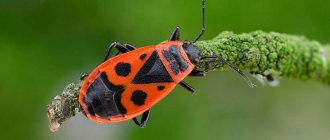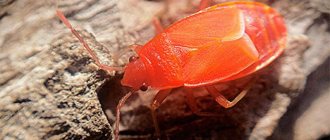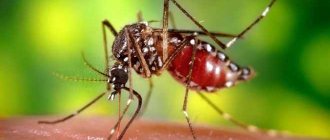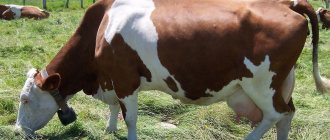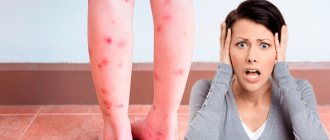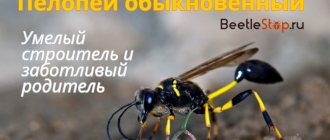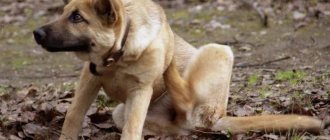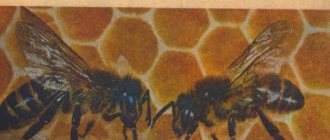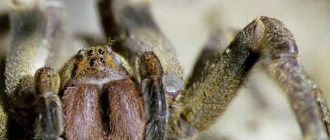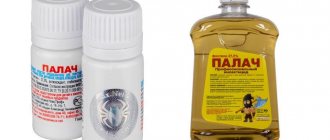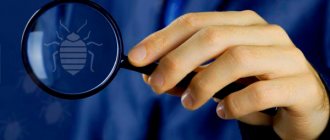A large family of earth bugs or ground bugs (Lygaeidae) belongs to the order Hemiptera. A characteristic feature of insects is their flattened body, small size and dark color. Among the 4 thousand species of the family, there are bugs with a bright contrasting color - red-black or red-yellow. One of them is a saddled terrestrial. A true phytophage feeds on the buds, ovaries and seeds of herbaceous plants.
How to get rid of the ground bug
Nobody likes bedbugs.
The attitude towards them can be described as disgust. And this is due to their only subspecies - bed bugs. These creatures, once they get into the house, bite painfully, ruin bedding and even furniture. And even though the rest of their brothers are completely safe for humans, the attitude towards them remains unambiguous. But tree bugs have taken root in selected corners of nature and exist peacefully, trying not to come into contact with people.
But they can harm the crops in your garden or ornamental plants, as well as penetrate into a person’s home.
What do wood bugs look like?
They are also called shield bugs. Most often you will see them on a tree or tall bush. Up to one and a half centimeters long, with a wide flat body, they look different at different times of the year: green in spring and summer, dark brown in autumn. The color is their camouflage. They are not so easy to see among the foliage.
And in winter, it is time for them to hibernate somewhere under the bark of a tree or fallen leaves.
Habits of wood bugs.
As already stated, they do not bite. They feed on plant sap. Where the bug feeds, it lays eggs. The leaf, or rather its reverse side, serves as an excellent platform for them. And you shouldn’t think that a bug that accidentally gets into your home will lay eggs. This will not happen, if only because there will be nothing to eat.
The bug even has wings. But only a critical situation, a threat to life, can force him to fly.
Tree bug invasion – myth or reality?
These insects require little for comfort - humidity with air temperature. It is necessary to change one of the named parameters, and the bedbugs flee. What may happen:
- flood; - fire; - high temperatures; - cold snap; - toxic fumes; — other natural or man-made incidents.
And then human housing can become a haven for them. Only for a while. And most likely - in the countryside. To prevent them from harming the crop, owners have to use insecticides, forcing the bedbugs to change their place of residence.
The main thing to remember is that in the event of any natural disaster, buildings nearby will be attacked by insects of all kinds. Wood bugs are almost the most harmless among them. One bad thing is the disgusting smell they emit from fear. It is very rare for a bug to bite a person.
What to do when a bug has entered the house?
Even a wood bug that has entered a room will only cause disgust and fear in many. Although this species is absolutely harmless. Therefore, the owner will not need to take radical measures. It is enough to understand that this is an accident, and that the house will never become its territory for these insects. And usually only a few of them end up in a home, no more than a dozen.
If they do fly into the house, just pick them up carefully and take them outside. By releasing, you will get rid of their presence forever. They won't come back.
Do you want to protect yourself from another such accident? Mosquito nets installed on windows and doors will help out. They are easy to purchase at any supermarket or specialty store. No tree bug will disturb your peace anymore. By the way, so do other insects from the street.
Is it necessary to poison wood bugs?
The answer is clear - no. They will not cause any harm to the people in the house. Before you grab insecticides and organize another pest control, think about the following:
- Cause harm primarily to yourself and your pets.
- There is no need to use these funds. You can take a bedbug out of the house into the air, and it will not come back, especially when you have already taken preventive measures (mesh).
Only in one case is the use of aerosol justified - if these insects appear in the house constantly. This happens very rarely and, as a rule, because there is a huge tree growing under your window, or a vegetable garden or raspberry garden nearby.
About the danger of a tree bug bite.
It has long been known that only bedbugs bite people and feed on their blood. The rest don't do this. Moreover, the jaw of the wood bug is not at all adapted for this. It is equipped only with a proboscis so that it can bite through a leaf or tree bark. Only in case of a mortal threat can something like a human bite happen.
By the way, predatory bugs with chewing teeth are often confused with wood bugs. These ones are quite capable of biting. But despite its pain, such a bite is completely harmless to humans. But if it hits the mucous membranes, it will swell a little and itch, nothing more. So a bedbug bite does not indicate the need to immediately begin thorough disinfestation.
Source
Features of life activity and habitat of bedbugs
When the war against these parasites begins, we forget that they lay eggs, and after a while the problem will repeat itself when new individuals emerge from the clutch. They grow their colony very quickly, so depending on what stage of reproduction you find them at, the time of destruction will vary.
Bedbugs can remain unnoticed in an apartment for a long time, because they crawl out only at night and for a long time can feed on parts of the skin epithelium that remain in the upholstery of the bed. For bedbugs to live a full life, certain conditions must be met: temperature, habitat, food. Bed bugs usually live in mattresses. They adapt very quickly. But if the factors listed earlier do not meet the requirements, they can do without them. True, their movement slows down significantly.
On average, the lifespan of a bedbug is up to 1 year, but in rare cases it can be longer. Bed bugs do not like sunlight and hide under baseboards, carpets, in cracks and furniture. The most favorable place for bedbugs to live is next to a person, so that they can refresh themselves at any time. Most often, as scientists prove, greater activity of bedbugs is observed between 3 and 7 am. Insects, like other living beings, try to avoid difficulties, so their victims are often children and young women, because their skin is more delicate.
According to average estimates, for a bedbug to survive normally, it is enough to feed once every 5 days. Depending on the temperature, the lifespan of insects can decrease or increase, but the most optimal is 25 degrees
Please note that as temperatures rise, not only does the life span of bedbugs decrease, but the larvae also develop more slowly and maturation is slowed down
If you consider that an individual of this insect generally lives for 12 months, and during this period the female lays approximately 500 eggs, then just imagine what kind of horde a colony of bedbugs can turn into a year after they appear in the apartment.
Common ground bug – should I be afraid of the red-and-black bug?
A large family of earth bugs or ground bugs (Lygaeidae) belongs to the order Hemiptera. A characteristic feature of insects is their flattened body, small size and dark color. Among the 4 thousand species of the family, there are bugs with a bright contrasting color - red-black or red-yellow. One of them is a saddled terrestrial. A true phytophage feeds on the buds, ovaries and seeds of herbaceous plants.
Review of effective remedies
The following medications can be used for bites of all blood-sucking insects, including bedbugs, they will help relieve redness and relieve itching. Each product comes with brief instructions for use and reviews from customers who used it after bedbug bites.
Akriderm ointment
Akriderm ointment has antihistamine, anti-inflammatory, disinfectant and antimicrobial effects. It is recommended to apply it to skin damaged by bedbug bites in a thin, even layer and lightly rub until it is completely absorbed. Akriderm is used as a course lasting 2–4 weeks according to a doctor’s prescription.
The cost of a package (30 grams) is 100–150 rubles.
Fenistil gel
Gel "Fenistil" is one of the best antipruritic agents, since its active substance blocks histamine receptors that provoke itching. To treat bites, you need to apply the gel twice a day. The drug has a contraindication: it cannot be used to treat children under one year of age.
Costs around 350–500 rubles.
Cream Afloderm
Afloderm hormonal cream has a light consistency, is quickly absorbed by the skin and does not leave greasy stains on clothes. Its active components have antiallergic, anti-inflammatory, antipruritic effects. The cream is rubbed into the skin until it is completely absorbed. The course lasts several days.
The price varies from 450 to 500 rubles.
Balm Golden Star (Asterisk)
Balm “Golden Star”, or in common parlance “star”, is made on the basis of natural extracts that work as an antipruritic complex. The balm has been familiar to everyone since Soviet times; its use was limitless.
The average cost is 80 rubles.
Cream Elidel
Elidel cream is very effective not only for dermatitis, but also for inflammation caused by insect bites, as it blocks the release of histamine. It is recommended to use the product 2 times a day, rubbing in with light movements until it is completely absorbed by the skin. The manufacturer writes that the cream can be used by children from 3 months old, but in other countries it is allowed only from 2 years old, or is even prohibited! There are many messages on the forums that this hormonal drug can severely suppress the immune system, so be careful and carefully study reviews about the drug before purchasing.
The drug is quite expensive: 900–1200 rubles.
Morphological description of the species
The spotted groundbird (Lygaeus tguestris) is a representative of the order Hemiptera, the family of groundbirds. The bug is medium size, length 10-12 mm. the body is oblong-oval, slightly flattened on top. The head is red, the eyes are large, faceted, spherical in shape. There are black spots near the eyes. The oral apparatus is of a piercing-sucking type, presented in the form of a segmented muscular proboscis. At rest, the organ is tucked under the head and chest.
Interesting fact. The red-and-black-saddled groundbird looks like a soldier bug. The presence of wings in Ligaea spottedis is a distinctive feature.
The shield has the shape of a trapezoid, widening towards the back, and rounded at the sides. The main color is red, there is a large black spot near the base. The head and pronotum are covered with short light hairs. The chest part is black. The abdomen is red with dark spots on the sides and bottom. It has three pairs of long, strong running legs.
The front wings of insects are half hard and leathery. This part is red with two black bands and spots. The edges of the wings are membranous, darkened with a round white spot. The rear pair of wings is shorter but wider than the front. When folded, the transparent rear fenders are on the bottom.
There are two subspecies of beetles:
- Lygaeuse equestris equestris (found by C. Linnaeus in 1758);
- Lygaeuse equestris sicilianus (described by Wagner in 1955).
Morphology
Imago
Sexual dimorphism
The genitalia of different-sex individuals differ in external structure. The structure of the male genitalia is an important species characteristic. Secondary sexual characteristics are not indicated.
The egg is round, green. Diameter 1 – 1.1 mm. As it develops, it changes color and pattern. On the second - third day it is evenly covered with brown dots, on the third - fourth the light green color is restored, at the same time a dark round spot appears on the lid.
The fifth – sixth day is characterized by the formation of an orange pattern shaped like an anchor. On the sixth - eighth day, the anchor pattern becomes clearer and a black spot in the shape of a triangle appears above it - an egg tooth. On the seventh – ninth day, the egg takes on a pink color.
First age. Length 1.5 mm, width 1.3 mm. The shape is almost round and strongly convex. The color of the larvae is light pink, and by the end of the first instar it is dark brown.
Second age. Length 2 – 2.3 mm, width 1.6 mm. The larva is slightly oval in shape. The color is light. Yellowish-gray tone. The head, pronotum and middle part of the abdominal segments are slightly darker at the top.
Third age. Length 3.3 – 4.5 mm, width 2.4 – 2.7 mm. The shape is ovoid. The color of the larva is light yellowish-gray, the head and abdominal segments are dark.
Fourth age. Length 5.2 – 6.1 mm, width 3.8 – 4.5 mm. The color is light yellowish-gray. The body contains clearly defined rudiments of the fore wings in the form of small protrusions on the mesonotum.
Fifth age. Length 8 – 10 mm, width 6 – 6.7 mm. The color of the larvae is light brownish-gray. Three lobe-like projections are visible on the posterior edge of the pronotum.
Phenology of development (in days)
Imago
During the years of mass reproduction, the forest area is populated by bugs almost evenly. During periods of depression - only the most illuminated areas and edges. In forest belts, bugs are concentrated on the south side.
During wintering, some of the bedbugs die. With a snowy, moderately cool winter and sufficient fat accumulation, the death rate of bedbugs is 5–15%. The lack of snow cover and sharp temperature fluctuations, combined with a weakened physiological state, lead to a mortality rate of 80–90%.
In spring, bugs emerge from winter diapause when the litter warms up to + 12°C – + 14°C. At a litter temperature of + 16 °C – + 17 °C they appear on its surface. Mass migration to wheat crops is observed at daytime temperatures not lower than +18°C – +19°C. Phenologically, this coincides with the opening of buds on poplar, maple and summer oak.
Depending on temperature conditions, the emergence of bedbugs and migration to grain crops may last until the end of May.
For the first time, not after migrating to the fields, bugs live in the lower tier of the grass stand and hide in the tillering nodes and under clods of soil. In sunny weather, at a temperature of + 18°C, the cows become active and begin feeding. At the same time, they damage plants in the tillering and booting phases, piercing the stems below the ear bud with their proboscis and sucking out the juices.
Imago
The migration of young adults to wintering areas begins during the harvesting of winter crops. Bugs migrate from fields during the day or evening. They fly at a level of 4 - 5 m. The pest is encouraged to fly by the depressing influence of heat and lack of food. Underfed bugs can spread to different biotopes. They accumulate on spring crops and corn. Some individuals fly to wintering areas, where they feed on wild herbaceous cereals, sometimes on seeds of tree species (ash, maple and others). The migration and feeding of the harmful bug bug is observed until the beginning of October.
Bedbugs that have accumulated enough fat reserves for wintering already take shelter under the litter in the first days after migration and remain there until spring. This process has been observed since July.
Lifestyle and reproduction
Insects are found in forest clearings, in bushes, and on lawns. Ligaea spotted prefers warm sunny areas on calcareous soils. In the spring, with the onset of stable positive temperatures, overwintered bugs appear near old stumps and tree trunks. In a garden or forest field, you can notice a cluster of red and black insects basking in the first rays of the sun. The first food of the common groundling is very meager; it is dry leaves. With the appearance of the first dandelions, he moves to yellow flowers.
One generation of earthen bugs develops per year. These insects are distinguished by an incomplete development cycle; there is no pupal stage. The larva is called a nymph.
Reproduction
Mating of terrestrials occurs in the spring on plants, stones or grass. Partners find each other by the scent they release containing pheromones. The male and female are connected by the posterior ends of the abdomen. The fertilized partner lays eggs on the lower part of the leaves of food plants or in the soil to a depth of 1-3 cm. There are 20-50 eggs in one clutch; the female’s fertility during her life is up to 500 eggs. The eggs are grayish-white in color and shaped like cylinders. Of the numerous clutch, no more than half of the viable embryos remain.
Information. The mating process of the mounted groundling lasts up to 24 hours.
The development of the offspring takes 35-40 days. During this time, the nymphs change through five instars. At the beginning they are red, the elytra are rudimentary, and the abdomen is enlarged. With each shedding of their skins, the larvae become more similar to flying adults.
The larvae feed on the caustic juice of milkweed and dandelion, the seeds of spring Adonis, and sunflower. Euphorbia and adonis (adonis) are poisonous herbs for many animals, and the motley liga feeds on them all its life without consequences. The peculiar diet makes the hemolymph (blood) of the bug dangerous. Nature took care of the terrestrial’s defense mechanism and signals to others. The red-black coloration is a warning sign for birds of prey, insects, and reptiles that can attack Ligium spotted.
Reproduction of insects of this species
The rate of development of all processes in the body and in intersexual relations of insects depends on the environment. Thus, acceptable conditions for the reproduction of stink bugs: temperature within +20...+30°C. When it decreases, bedbugs lay offspring less intensively. Insects attract each other through smell. Shield insects emit a specific aroma, which appears when secretions are secreted by glands located on the abdomen.
Individual members of the family attract mating partners through the sound created by the paws rubbing against each other and against the proboscis. It is almost inaudible to people, especially in nature. Shield insects differ from other insects in their ability to lay eggs throughout their lives after a single mating. They often leave offspring on plants. One clutch consists of a large number of eggs - up to 40 eggs.
However, sometimes such formations are characterized by an unusual color: there are black and green eggs.
Mating of berry bugs The mating process can last a long time.
The duration of mating can be several hours. If environmental conditions allow, insects can leave up to 3 clutches on the back of leaves over the entire summer period. They begin to mate when it gets warm. The duration of egg maturation is 10-14 days.
Female bedbugs from the group of herbivorous species take care of their offspring. She does not leave the eggs, but guards them all the time. When danger appears, it can cover the masonry with itself, like a shield. When the larvae emerge from the eggs, they are also under the protection of the mother. Representatives of predatory insect species, on the contrary, are less caring. They leave eggs wherever they need to, and do not contribute to the development of larvae.
How to get rid of the ground bug
In nature, there are many species of animals and insects that cause serious damage to agricultural and garden plants. According to official statistics, about twenty percent of crops around the world are destroyed annually from their vital activity. Garden bugs are widespread throughout the globe. They have sucking type mouthparts and are adapted to feeding primarily on liquid food (carnivorous species are less common). Insects damage the stems and foliage of plants, on which characteristic brown spots appear. Methods for killing insects depend on their type and the structure of their mouthparts. These may be internal chemicals that enter the digestive tract along with plant sap. In the fight against bedbugs, external insecticides are most often used. They penetrate the insect’s body through the chitinous membrane and respiratory organs.
Methods of fighting bedbugs with soldiers
Despite the fact that scientists still do not classify the soldier bug as a parasite, it is dangerous for garden crops. Before you start fighting the parasite, you need to make sure that you are dealing with the soldier bug. Among all summer cottage plants, these parasites give preference to:
- beets;
- cabbage;
- grapes;
- flowers;
- umbrella plants.
If you find that these plants have begun to weaken, most likely the cause is soldier bugs. Insect bites leave marks on plants in the form of yellow spots.
It is quite difficult to remove soldier bugs from a summer cottage. This is due to the fact that females lay eggs inside the leaves and stems of the plants on which they feed. Methods for controlling bedbugs are divided into 3 groups: mechanical, biological and chemical.
Mechanical methods of control
This group of methods involves collecting bugs and their subsequent destruction. This is an ineffective way to kill parasites and will take a lot of time. Summer residents resort to this method if it is not possible to use insecticides (on the eve of harvest, for example). If bedbugs have already taken root in a summer cottage, then the mechanical method of combating the parasite is ineffective.
Biological control methods
These control methods involve planting plants that repel bedbugs. One such plant is black cohosh. It blooms beautifully, and in addition to helping to get rid of harmful insects, it will decorate your summer cottage.
Each summer resident has his own recipe for fighting the beetle. Some people manage to get rid of the harmful beetle using a decoction of onion peels. This product does not damage the soil. All plants growing in the garden must be treated with the decoction. The red beetle is also afraid of wood ash, which we first dilute in water. Some summer residents use soap or mustard solution to fight soldiers.
Chemical control methods
Chemical methods of controlling bugs with soldier bugs involve the use of insecticides. There are a large number of different pesticides on the market, which are not cheap today
Therefore, it is important to choose an effective insecticide that will help get rid of bedbugs. “Bankol” is popular in the market today. This insecticide does not have a pronounced odor
It can be used to combat not only bedbugs, but also other parasites commonly found in the garden. When ingested by an insect, the drug blocks the functioning of the central nervous system, which causes paralysis, which causes the death of the insect. The peculiarity of the insecticide is that it does not kill insects that are harmless to the garden plot, and is not dangerous to humans. Before using the drug, read its description. If the manufacturer's recommendations regarding the dosage of the pesticide are not followed, the product will be ineffective
This insecticide does not have a pronounced odor. It can be used to combat not only bedbugs, but also other parasites commonly found in the garden. When ingested by an insect, the drug blocks the functioning of the central nervous system, which causes paralysis, which causes the death of the insect. The peculiarity of the insecticide is that it does not kill insects that are harmless to the garden plot, and is not dangerous to humans. Before using the drug, read its description. If the manufacturer's recommendations regarding the dosage of the pesticide are not followed, the product will be ineffective.
When choosing control methods, you need to answer the question: “which recipe is the most acceptable for me?” If you do not want to harm the soil and crops, then it is advisable to adopt traditional methods of control. If you need to get rid of bedbugs in a short time, it is better to use an insecticide.
Garden bugs
Bedbugs are insects with a characteristic odor, whose vital activity harms garden crops and also reduces the quality of life of mammals and humans. Red bugs (garden bugs) feed on plant sap, which can lead to the death of immature shoots. This order of hemiptera has glands that produce cimycin acid, which repels birds. Insects reproduce quickly and easily adapt to extreme environmental conditions.
The common ground bug is a family of bugs distinguished by its characteristic color (black-red or black-yellow) and body shape. The size varies from one to 12 millimeters. Distributed throughout the world. Adults and larvae of the bug feed mainly on cruciferous vegetables (cabbage, radish, and others). In this case, insects damage the skin of the plant, and yellowish spots remain on the leaves. Bedbug eggs are protected by a chitinous shell and are bright red in color. The mounted groundling feeds with the help of a piercing-sucking proboscis located in the lower part of the head. There are also several similar species in nature. For example, bugs of the family Lygaeida, unlike the land bug, are capable of flight. The wings have membranes. The sides and chest are black.
Families of Water striders, Greblyaki, Gladyshi, Mesovelia, Plautus and Water scorpions
Yes, the water striders everyone knows from childhood, running across the surface of the water, are also bugs. Water striders (Gerridae) number about 700 species, live on the surface of the water, and with the onset of cold weather they hide under the bark. The body and tips of the legs of the water strider are covered with antennae that are not wetted by water, due to which it can move along the surface of the water. Body length is from 1 mm to 30 mm, dark brown or brown in color. They feed on small invertebrates that have fallen into the water, have a piercing-sucking proboscis (after all, they are also bugs) and have external digestion, like flies. Water striders inject paralyzing and decomposing substances into the victim's body. In very rare cases, they can suck human blood. Water striders come with wings and wingless ones.
Paddlefish (Corixidae) number 550 species. Paddlefish live in small schools in still or weakly flowing waters and are active in summer and winter. Paddlefish breathe atmospheric air and are small predators. Paddlers make sounds similar to gentle chirping.
Smooth bugs (water wasps, Notonecta) are freshwater bugs with a piercing proboscis that can bite through human skin. The bite of the smoothie is quite painful. Gladysh are mostly located shallow from the surface of the water; they can stay under water for about 7 minutes; they also fly well and winter outside the water in the litter and bark of trees. Gladysh are predators, feeding on small insects and sometimes fish fry.
Mesoveliidae are a small family of small bugs (about 40 species), body length about 5 mm. Plautans (Naucoridae) are a family of bugs with dense swimming hairs on their legs. They are predators and spend the winter outside the reservoir.
Water scorpions (Nepidae) are aquatic bugs, up to 5 cm long, with characteristic grasping forelimbs and a breathing tube in the back of the body. They live in stagnant bodies of water, do not swim very well, and spend most of their lives in ambush.
Gerris lacustris (Pond strider)
Aquarius paludum
Gerris rufoscutellatus
Gerris thoracicus
Corixa dentipes Cymatia coleoptrata Hesperocorixa sahlbergi
Sigara falleni
Notonecta glauca
Notonecta meridionalis
Mesovelia furcata Mesovelia sp.
Ilyocoris cimicoides Nepa cinerea
Ranatra chinensis
Ranatra linearis
Ranatra sp.
Ranatra unicolor
Shield family (Pentatomidae)
Bugs (3-24 mm) with an oval body and dense integument. About 3 thousand species are known in the world fauna. The ubiquitous shield bugs may be less numerous in nature than horse flies, but they are much larger and more massive, and therefore are the first to be noticeable.
Reaches a length of 14 mm. This bug runs quickly through grass and bushes.
Up to 16 mm long, prefers to be in trees. Its color matches the color of the leaf so much that this large bug is difficult to notice. The camouflage of the palomena larva is even more perfect; it doesn’t even look like a bug, but rather like a round piece of leaf on legs. In green stink bugs, like most species of the family, adult bugs overwinter among fallen leaves. In autumn they change color, becoming not green, but brown, the color of the litter.
Some stink bugs are considered pests of agricultural crops. For example, a beautiful black-blue garden bug with a white or red pattern, about 6 mm long, can damage crops from the cruciferous family (cabbage, radishes, turnips, etc.) in the garden. However, more often this bug damages cruciferous weeds.
Bedbug larva feeding
Harm from nymph bites
To control pests, products designed for adults are used. Popular insecticides in aerosols are “Raptor”, “Clean House”, “Dichlorvos”. The use of concentrated emulsions “Executioner” and “Get” is effective. After 2 weeks, re-treatment will be required. By this time, a new generation of larvae will emerge from eggs that do not die from chemicals.
Where to look for larvae
The search for larval habitats is limited to areas closest to the bed. They can be hidden in the seams of the mattress, behind torn wallpaper, in the cracks of walls, door frames, and inside upholstered furniture. To get to them, in some cases you will have to tear off the upholstery. To destroy the entire colony of pests, comprehensive measures are used, including high-temperature treatment of furniture, walls, bedding and clothing. Bedbug larvae do not have mechanisms to protect themselves from chemical and heat treatments.
eggs hatch into larvae that spin cocoons.
and develop into pupae and then develop into adults. Depending on environmental conditions such as temperature, humidity and the presence or absence of hosts, the cycle can take anywhere from several weeks to several months.
Flea eggs look like translucent oval dots about 0.5 mm long. But it is quite difficult to see them, since they dry out quickly after being deposited
, become heavy and fall out of the cat’s fur. The best place to look for flea eggs is in your cat's bedding and other places where your cat likes to sleep. If the cat is heavily infected, you can look with a magnifying glass at the base of the tail or on the stomach. If there is flea dirt in your cat's bedding, it likely contains flea eggs. Flea dirt is dark and the eggs in it have a whitish appearance.
The development of the larva in the egg takes about two weeks, depending on temperature conditions. The size does not exceed 1 mm. Nymphs of the first instar are born in the same way. Outwardly they resemble adults, but have a lighter color.
Within a few days the first molt occurs. In the process, the young individual climbs out, grows 1 mm larger, and leaves a skin. Over the course of 20 days, nymphs molt 5 times. At the last stage, the larva increases in size to 5.5 mm. The formation of the genital organs occurs, it becomes an adult, ready for...
Bedbug nymphs at the last stage look almost the same as adult adults, differing in size by 2 mm. There are also other differences.
- What bedbugs and their larvae look like depends on their diet. A hungry bug has a flattened, wide body, gray in color. The insect is active, crawls quickly, is difficult to catch and even more difficult to crush. A photo of bed bug larvae and adults in the fasting stage is presented below.
- Bedbug larvae look slightly different after feeding. The chitinous cover expands as food arrives. The bug takes on a rounded shape, due to this it increases in size. Body color is dirty scarlet. After a few days, the blood coagulates and turns brown. All this is visible through the translucent chitinous cover. Well-fed adults, developing clumsy, vulnerable, burst at the slightest pressure. A photo of house bug larvae in a well-fed state is presented below.
- Under unfavorable conditions of existence, the larvae and adults fall into suspended animation. Metabolic processes slow down, the body gradually dries out. The insect turns into a living mummy. In this state, it is easy to confuse it with a skin after molting or with a dead bug. The color is gray, almost transparent. But when favorable conditions occur, the insect instantly comes to life and begins active feeding. Nymphs are more resistant to starvation than adults.
- The eggs are white, oblong in shape. However, it is very difficult to see them with the naked eye.
Bedbugs at the final stage of development differ little from the imago in appearance and behavior. They live in a person’s bed or in close proximity to a bed or sofa. mostly in the bedroom. Egg laying in adult adults occurs daily. There are many eggs in one place. Each of them is about 1 mm in size.
What does a wood bug look like?
The green tree bug has a sharp and long proboscis, with the help of which it obtains food for itself. Its body has a characteristic structure - a wide and thick shell, like a shield. Because of it, the insect is sometimes called a stink bug. The color of the shell is bright green or dirty brown with red splashes. The development period of the green bug lasts more than a week. A durable shield-shell made of chitin helps the insect fight external influences. The molting period - when the stink bug sheds its old shell - is a dangerous time. If the bug does not have time to get out of its tight shell, it dies. In the photo, these insects look harmless, but their disgusting characteristic smell when met in person leaves a less favorable impression.
Is the wood bug harmful?
- The insect can eat crops;
- The pronounced unpleasant smell of a bug can ruin the taste of berries or any other fruit after interacting with it;
- It poses no threat to human habitation, other than being aesthetically unsightly.
Sometimes there are invasions of these insects on garden plots, as a result of which a significant part of the crops or plantings perishes, and the wood also deteriorates.
Are they dangerous for humans?
Garden bugs pose a threat to crops. They do not harm people, but if a stink bug enters a room, an allergic reaction may occur.
If the insect gets on the bed or hygiene items, it can cause itching or a rash. The smell spread from stink bugs remains on objects, on things, on the body. And if you accidentally crush an insect, you will have to ventilate the room for a long time to get rid of the unpleasant smell. Even repeated hand washing will not get rid of the unpleasant smell of garden bugs if you touch it.
If you find stinking insects in your home or if they enter a room, you must use a gentle method to eliminate them. It is not recommended to crush them, because the smell of a stink bug can cause an allergic reaction, including angioedema.
How to fight insects
When pests appear, it is necessary to immediately take measures to destroy them. Insects reproduce quickly and can cause considerable damage to garden crops. There are different methods to get rid of the soldier bug.
Natural enemies
The natural enemies of soldier bugs are birds, mantises and bats. A pungent odor can scare off certain birds, such as tits. Sparrows are good at destroying insects, but they can also harm crop plants. When red bugs get caught in a web, many spiders discard them due to the pungent odor.
Its poisonous color and smell make it invulnerable
The coloring of the red bug is a camouflage with which it protects itself from natural enemies. For birds and spiders, red is a signal that the insect is poisonous and should not be eaten. Soldier bugs are well protected from destruction precisely due to this property.
Chemicals
When using chemicals, it is necessary to take into account that when insects are killed, harm will be caused to the soil and the plants themselves. Soldier bugs have the ability to adapt to pesticides, so each subsequent generation does not die from the previously used poison.
Control measures
So, the bugs have appeared, here’s one, there’s a second one crawling along the birch tree - it’s time to sound the alarm! But you shouldn’t rush headlong to the store and buy drugs containing chemicals, maybe we’ll make do with folk remedies for now?
The simplest of them are onion decoctions (250 g per bucket of water, the norm per square meter of soil of infected plants), wood ash (200 g per bucket of water, this is also a passable potash fertilizer and also the norm per square meter of infected plants), mustard powder (100 g per bucket of water, the norm per square meter of infected plants), laundry soap (you can use a whole piece, the norm per square meter of infected plants).
Planting black cohosh (especially for Botanichka readers - this is a plant belonging to the Buttercup family) or black cohosh (here the name speaks for itself) can also help. For some unknown reason, the smell of these plants makes the soldiers feel bad, and they try to set up a base in a neighboring area, leaving yours alone.
Next comes artillery, a little more powerful, but still biological. This is the Baikal drug, it must be diluted in strict accordance with the instructions on the package, but usually six milliliters are diluted in a bucket of water, a spray bottle is filled and the beetles or infected areas of crops are spot-treated.
Chemicals. Here you need to be careful - serious chemistry requires compliance with mandatory processing times, doses, drugs must be approved for use, and so on and so forth. More recently, Karbofos and Aktara effectively fought against the beetle; they caused paralysis in insects and they simply died.
A cluster of soldier bugs on a tree trunk.
How to identify a wood bug
It differs from other insects in two ways:
- pentagonal body shape;
- inability to fly, despite having wings.
Tree bugs are named so due to their main habitat - on trees and bushes. In winter, stink bugs are usually not found, as they are in a state of hibernation. They rarely get into apartments; they are usually brought from the garden or market along with fruits and flowers.
The stink bug differs from other insects by its specific smell, which is difficult to confuse.
Who is called the “stink bug” and how to recognize them?
In general, sedentary insects that do not often use their wings may enter living spaces during migration. The reasons for its onset are unexpected untimely cold snaps, intense heat, a sharp and significant increase in humidity, and fires.
In addition, bedbugs can be carried along with collected gooseberries and raspberries, as well as on clothes or shoes. They can be blown by a gust of wind from nearby trees and bushes into an open window.
The structure of the stink bugs is very similar to that of house bugs. In both species, it has a piercing-sucking function: the proboscis penetrates the food source and sucks out the contents.
Adults have small wings, but this allows them, in extremely rare cases, to fly to a low altitude in order to get to tasty food.
With the onset of winter cold, tree bugs go into hibernation until the weather warms up. As soon as the first blades of grass appear, the insect immediately sets off in search of habitat and food. Most often they can be found on the following plants:
- raspberries;
- gooseberry;
- alder;
- larch.
All shield bugs have some peculiarity - a small rectangular protrusion between the head and stomach, which strikes fear into those who do not know about its harmlessness.
There are several varieties of wood bugs:
The two-toothed stink bug is considered a carnivorous insect. It feeds on other plant pests, which underscores its some usefulness;
Palomena green. In summer it is distinguished by a bright light green color, and in autumn it acquires a brown color;
the northern cruciferous bug has an unusual pattern on the upper body;
The red-legged stink bug has a deep bronze tint. It stands out for its largest body size (can reach 16 mm);
berry shieldweed. The name was given to the insect because of its partiality to various berries, including poisonous ones.
If a shield bug gets inside a home, there are several reasons for this:
- The apartment is warm, but the cold came prematurely. Due to sudden frosts, the beetle crawled through the window, trying to find more comfortable living conditions.
- Flood, forest fire.
- The insect ended up in the apartment along with berries; more often it is brought in raspberries.
Considering that an insect of this family cannot harm a person or even bite, it should therefore be released.
https://youtube.com/watch?v=DJ7WOfcOm_c
Garden stinkers also destroy various plants. In such a situation, they drink raspberry or gooseberry juice.
In the absence of raspberry or gooseberry bushes in the garden or vegetable garden, this parasite damages both other bushes with berries and deciduous trees, as well as a variety of succulent herbs. In addition, the garden representative of hemipterans feeds on cereals or the remains of dead insects.
The daily bedbug diet includes both animal and plant foods. Sometimes this representative of hemipterans damages cereals.
In order not to worry in vain when you see a new insect for you, you can clarify what they look like.
- An adult green wood bug can reach up to 15 mm in length. Body thickness is approximately 3 mm. It has a flat angular shape.
- The color of the bug is juicy green. But it may change depending on the time of year. Since color helps to camouflage, in summer and spring the bug will be green, and with the onset of autumn brown spots will gradually appear on the body to blend in with the fallen leaves.
- These insects also have wings, but rarely use them. On top there is a layer of skin-like hard wings, and under them there are soft membranous wings. And with the help of delicate wings it is very difficult for such a large bug to take off and fly, so they fly only if the goal is a large amount of food, or when they are attacked by other insects or animals.
- They are easily recognized by their characteristic unpleasant odor. Bugs apply their scent wherever they visit. Therefore, it is impossible to eat berries after them. The smell is designed to scare away enemies.
- The wood bug has antennae that are designed to capture the scent of plants.
Reasons for the appearance of wood bugs in the house
Living quarters are not the most comfortable habitat for shield bugs. They usually end up in an apartment by accident in single copies. A massive invasion is possible if there are plants on which they live under the window of the house. In the event of a sudden change in weather (cold temperatures, extreme heat or wind), they may seek more comfortable conditions and move to an apartment.
In a village house, invasions occur more often, but for a city apartment such phenomena are atypical.
Can shield bugs breed in an apartment?
An apartment or other type of human habitation does not attract stink bugs as a breeding site and permanent habitat. There is no power source for them here.
Despite their name, they do not feed on wood, chew furniture, or threaten wood products.
The usual breeding site is the underside of the leaf on which eggs are laid.
basic information
Harmful turtles survive the winter mainly among fallen leaves, that is, the places where they are concentrated are forests and gardens. When the air warms up to +15, these bugs wake up from hibernation. Approximately this temperature is reached in the spring, so winter varieties are at greater risk. For the migration of harmful turtles, the wind is very important - in which direction it will blow. Bedbugs can travel distances of up to 50 kilometers, but in some cases the length can increase to two hundred kilometers.
Reproduction
Once the bedbugs find the right place, they begin to reproduce. After two weeks, the females lay eggs. Eggs can be found on seedlings of grain crops, weeds and dead parts of plants. After another seven days, the eggs will begin to hatch into larvae.
The period of growing up is divided into five phases and in total is a little more than a month. A special feature is the fact that even small larvae begin to harm the plantings. They eat food that adult harmful turtles eat. That is, the larvae are full-fledged pests. The lifespan of an adult pest is almost a year, namely about ten months, that is, the probability of surviving until the next season is quite high.
The bug primarily lives in the steppe zone and southern forest-steppe. It can be found in Russia, Ukraine, and Central Asia. It is also found in foreign countries, for example, in Greece, Romania, Turkey, Pakistan and many others.
Harmful turtles destroy wheat, oats and barley. Corn is also sometimes attacked. At the end of the agricultural season, bedbugs move into grain storage facilities. The rest head for the winter, where they bury themselves in the ground and wait for next spring. They are dangerous because they damage even uneaten plants. Their saliva makes the grain unsuitable for food, the gluten loses its elasticity - the dough from such grain will be viscous and gray. If you leave things to chance, the harvest may be completely lost. When harmful turtles do not find fertile lands that have been cultivated by humans, they begin to feed on wild plants and crops. These signs may indicate the appearance of this pest:
- young shoots wither sharply;
- grains change color;
- the ears change in shape.
Fighting methods
The fight against turtle bugs is easy if you prepare in advance and find information about them. The preventive path - preventing an invasion at the very beginning - will be the easiest. To do this, use varieties that are resistant to parasites, fertilize the soil with preparations based on potassium and phosphorus, check the area for weeds, and surround it with planting shelterbelts. The bugs see them as an obstacle and do not fly further, thus the area remains safe.
If harmful turtles have nevertheless made their way into the area and are already causing harm to it, you will have to get rid of them directly. One of the simplest solutions is chickens. A chicken can destroy a fairly large number of bedbugs in a day. But this method is not suitable for large industrial scales. Chickens will be a salvation only for small farms with small areas.
Chemicals are the second most powerful tool in the fight against bedbugs. One of the most popular remedies is Aktara. The product acts very quickly, within an hour the pests lose their ability to feed, that is, they lose the ability to cause harm, and die within 24 hours. There is another remedy that has a faster effect - “Karate Zeon”. Death occurs in less than a day. It can be used both locally and by spraying from the air, covering large areas. Other remedies - for example, Fastak, Mavrik - have also proven highly effective.
Pest bugs are one of many threats to agriculture. While this species does not pose a danger to humans, it is a big and serious blow to grain crops. Bugs can sneak into barns and cause significant damage to grain, flour becomes inedible, and therefore the harvest is lost
If you suspect that the area has been attacked by a bug, you should immediately pay attention to the characteristic signs of its appearance and choose an appropriate strategy to solve the problem
Fortunately, this threat has long been widely studied, and there are a number of measures to eliminate it. Prevention will include the creation of forest belts around the site and the use of special fertilizers. On a small scale, chickens will help deal with the bug; they destroy the pest quite intensively. If things go too far, you will have to use chemicals.
Next you will see a photo of a harmful bug:
What else should you know?
Hungry insects can harm everyone in an infested home, but can bedbugs live in animal fur? The answer is simple: no, they cannot. The body of arthropods is not adapted to move between the thick hairs of the skin: their legs simply cannot fix the body in one position. Parasites climb onto a pet only during its sleep, when there is a chance to easily reach the blood vessels of the victim and drink its blood. Typically, the bug’s “lunch break” takes 20-30 minutes, after which it quickly leaves the “crime scene” and hides in a secluded corner until the next attack.
The first “wild” bed bugs chose small mammals—rodents—as their “food sources.” They settled in nests or burrows and had year-round access to food
At home, mouse-like animals also attract the attention of bed bugs, but only if the main “breadwinner” has not appeared in the house for several days
